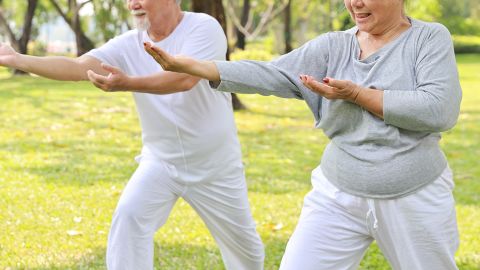From signalsaz.com
Pain and joint stiffness are two nagging arthritis symptoms that millions of people—mainly seniors—experience. The debilitating disease, which affects more than 20 percent of adults in the United States, is the leading cause of disability in the nation.
While there is no cure for arthritis, family caregivers of seniors need to stay informed about the disease and learn how to minimize the pain and discomfort their loved ones experience.

What Are the Different Types of Arthritis?
More than 100 types of arthritis and related conditions exist. Arthritis is most commonly seen in adults over 65 but can develop in children or young adults. It is more common in women than in men.
Common arthritis symptoms include swelling, pain, stiffness, and decreased range of motion in the joints. Symptoms may come and go and can be mild, moderate, or severe.
The three most commonly diagnosed forms are:
Osteoarthritis
Osteoarthritis, the most common form of arthritis, is a degenerative disease that occurs in the joints — or the point where two bones come together. When cartilage – which acts as a protective cushion – breaks down, bones begin to rub together and cause inflammation, pain, and stiffness.
Rheumatoid arthritis (RA)
RA is an autoimmune and inflammatory disease in which the immune system mistakenly attacks healthy body cells. RA can attack many joints – usually the hands, wrists, and knees – at once. RA affects the lining of the joints and causes inflammation and damage to the joint tissue. This damage can cause chronic pain, lack of balance, and deformities.
Psoriatic arthritis
Psoriatic arthritis affects people who have psoriasis, a disease that causes red patches and silvery scales on the skin. The main symptoms that can occur before or after the skin patches appear are joint pain, stiffness, and swelling. These symptoms can range from mild to severe and can affect any part of the body, including the fingertips.
Common Arthritis Treatment Options
A doctor may recommend a variety of treatments depending on a senior’s symptoms and personal condition.
Here are five common arthritis treatment options and how professional senior care can provide support:
1. Medications
One way to treat arthritis pain is through medications prescribed by a doctor. An in-home caregiver can provide medication reminders, make sure your loved one is taking medication as recommended, and keep an eye out for side effects or worsening symptoms.
2. Physical Activity
Physical activity can reduce pain, improve mood, and reduce the chances of developing chronic diseases, such as diabetes and heart disease. An in-home caregiver can encourage your senior loved one to keep moving as much as their symptoms allow while reducing the risk of a fall or other injury.
3. Weight Management
Excess weight can put pressure on already-swelling joints from arthritis. Maintaining a healthy weight is important when managing arthritis to ensure no extra pressure is exerted on painful joints. An in-home caregiver can help your loved one follow dietary and exercise guidelines to promote a healthy weight.
4. Stretching
Gentle stretches that move joints through a full range of motion are a simple and effective way to keep joints healthy. Seek advice and recommendations from a health professional, such as a doctor or physical therapist, to achieve the best results and avoid injury. An in-home caregiver can remind your older loved one to follow their stretching program and report any concerns to you.
5. Regular Medical Care
The most important thing you can do is stay informed and up to date on your loved one’s disease and symptoms. Consult your loved one’s doctor and medical team. An in-home care professional can assist in making appointments and arranging transportation for seniors to the doctor’s office.
Living with arthritis is challenging, but seniors can continue to manage symptoms effectively — especially when professional help is available.
https://www.signalsaz.com/articles/5-arthritis-treatment-options/






